Analogue is reliable
Gravity Ballistics and KraftWind methods can independently, as well as in combination, offer significant advantages to shooters. These methods do not rely on chronograph data or pre-made wind sheets, which can be challenging to measure accurately in the field without equipment that is sometimes unavailable. Instead, this approach utilizes observed bullet drop data from a known distance, typically starting at 200 or 300 yards, to predict trajectory at longer ranges by focusing on gravity’s consistent impact on the bullet’s path. This method provides a straightforward and effective tool for shooters who require reliable ballistic information without complex inputs, particularly in situations where technological tools such as ballistic calculators are unavailable or fail.
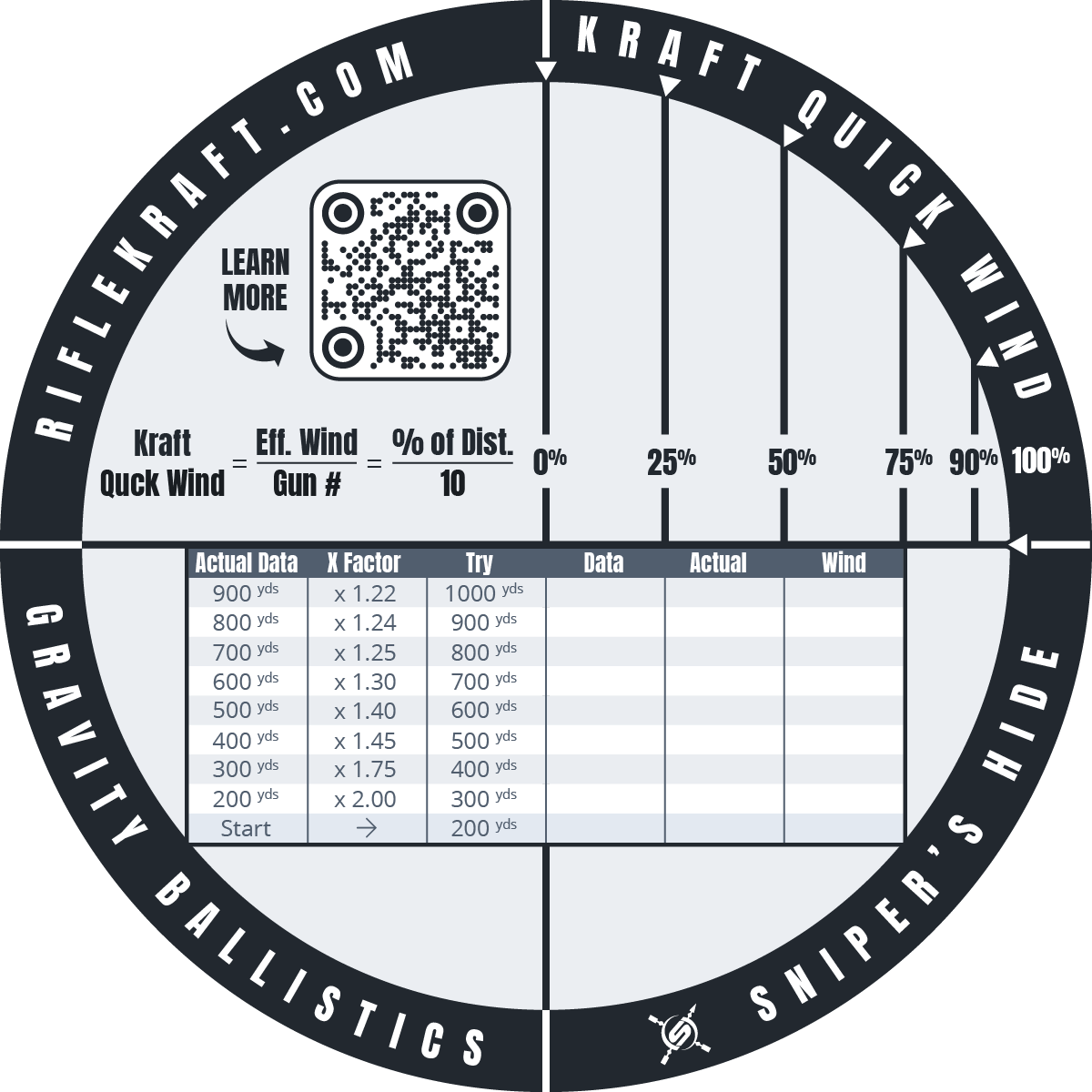
While Gravity Ballistics does not account for wind, it integrates seamlessly with complementary methods such as RifleKraft’s KraftWind, which offers a practical approach to estimating wind effects based on observed conditions. Together, these analog techniques provide a robust, low-tech solution, enabling shooters to achieve accurate shots in the field with minimal dependence on electronic devices or precise muzzle velocity data, thereby enhancing both safety and efficiency.
Methods to train, hone skill, confidence, and true devices with
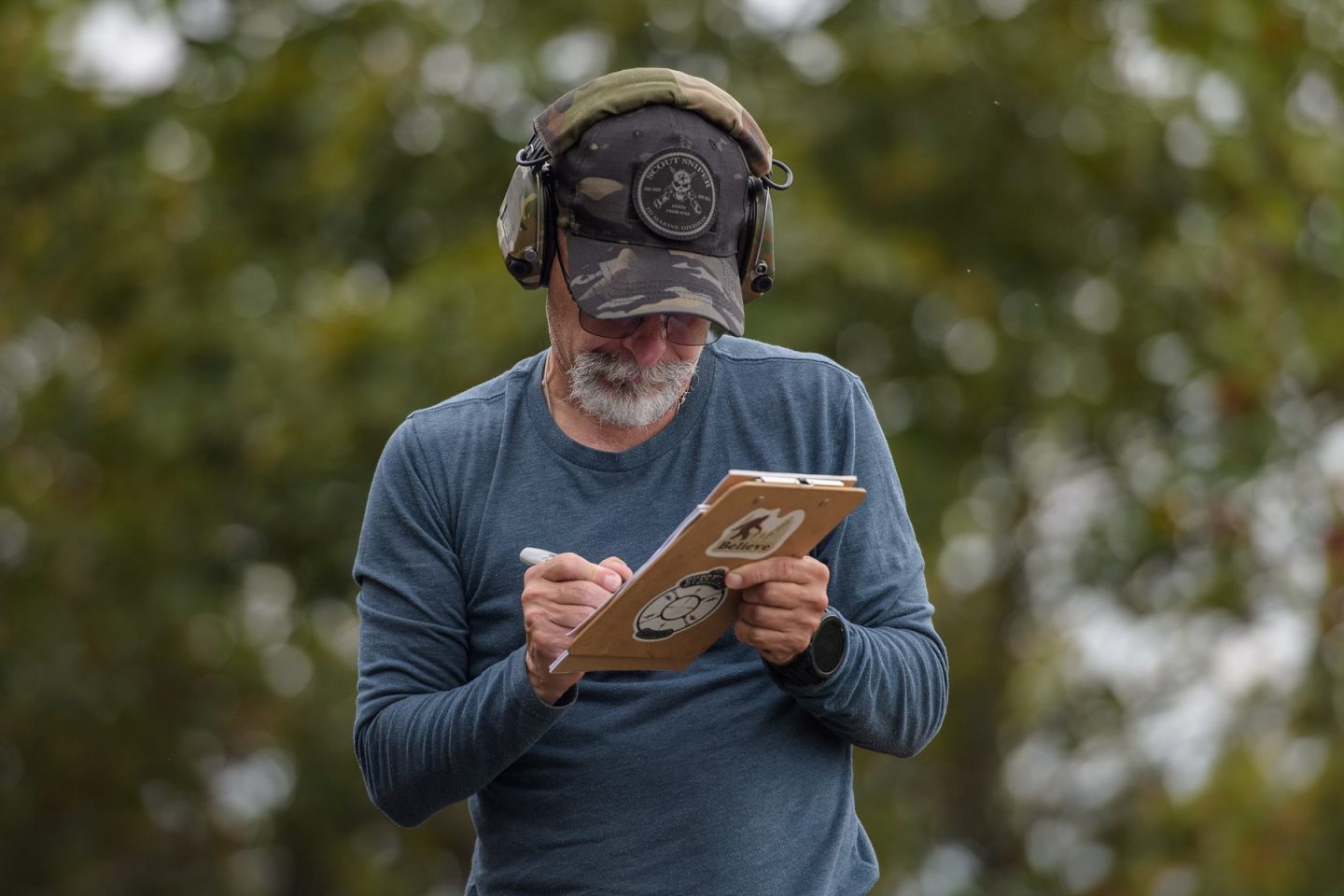
In a modern world flooded with advanced tools, it may seem peculiar to advocate for learning an analogue method of ballistic calculations. Nevertheless, these techniques can be extremely beneficial to hunters, competitive shooters, and professionals who work with rifles. There are instances when unforeseen events occur, and the data may not be readily accessible, or system changes might take place after equipment has been left behind. For example, one may need to purchase new ammunition or change rifles without having access to a chronograph or the necessary technology to gather data in the field. These techniques put reliable ballistic information without complex inputs right in the hands of any shooter who learns them.
Hunting
In various practical applications, these analogue tools offer significant advantages and safeguards for hunters operating in remote environments where electronic ballistic calculators may become unreliable due to battery failure, severe weather conditions, or lack of signal. By using pre-observed bullet drop data at a specific distance, hunters can efficiently estimate holdovers for longer shots without requiring precise muzzle velocity measurements or complex inputs. Gravity Ballistics, combined with KraftWind’s effective wind estimation methods, enables hunters to adjust for environmental factors promptly, ensuring ethical and accurate shots on game. In high-pressure scenarios, such as tracking elusive game in challenging terrain, the ability to perform these calculations mentally or with minimal tools can determine the success of a hunt versus a missed opportunity.

Competing
For competitive shooters, mastering Gravity Ballistics and KraftWind provides an insurance policy for when technology fails or time constraints prevent using devices. These methods allow competitors to maintain accuracy under tight time limits, adapting quickly to varying distances and wind conditions without relying on electronic aids. The calculations themselves are beneficial, as well as the confidence gained from performing them without technology, resulting in repeated accurate hits during training. Understanding these calculations builds confidence and resilience, enabling shooters to trust their skills to deliver consistent performance, even in adverse conditions like malfunctioning electronics or drained batteries. This reliability is particularly important in field-style competitions, where environmental variables are unpredictable, and a shooter’s ability to make rapid, accurate adjustments can determine their placement. Without familiarity with these methods, it is common for a shooter to hesitate or be unsure of what to do. However, proficiency and trust in a system that works effectively shortens the decision-making time needed to take an effective shot and remain competitive.
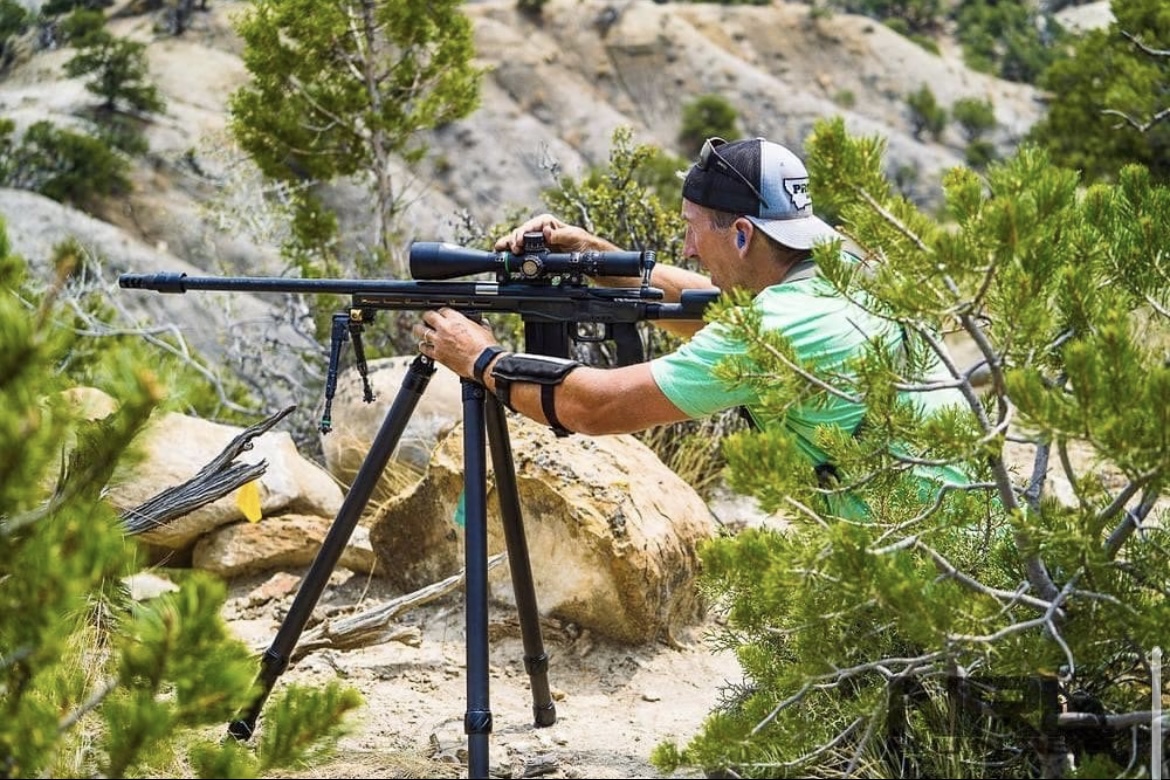
Working
For professionals such as snipers or tactical operators, the stakes are higher due to the involvement of life-or-death scenarios and potential legal consequences for inaccurate shots. Gravity Ballistics offers a reliable option when advanced systems are unavailable, damaged, or impractical due to operational constraints. By understanding bullet drop through gravity-based calculations and combining it with KraftWind’s information, riflemen can remain effective in various environments, from urban areas to remote battlefields. This method provides a mathematically justifiable way to demonstrate accuracy of data. The ability for a rifleman to have access to reliable ballistic information without complex inputs from a device is empowering and gives options when you need them. Performing these calculations independently of technology enhances operational security, reduces reliance on equipment, and supports mission success under pressure.
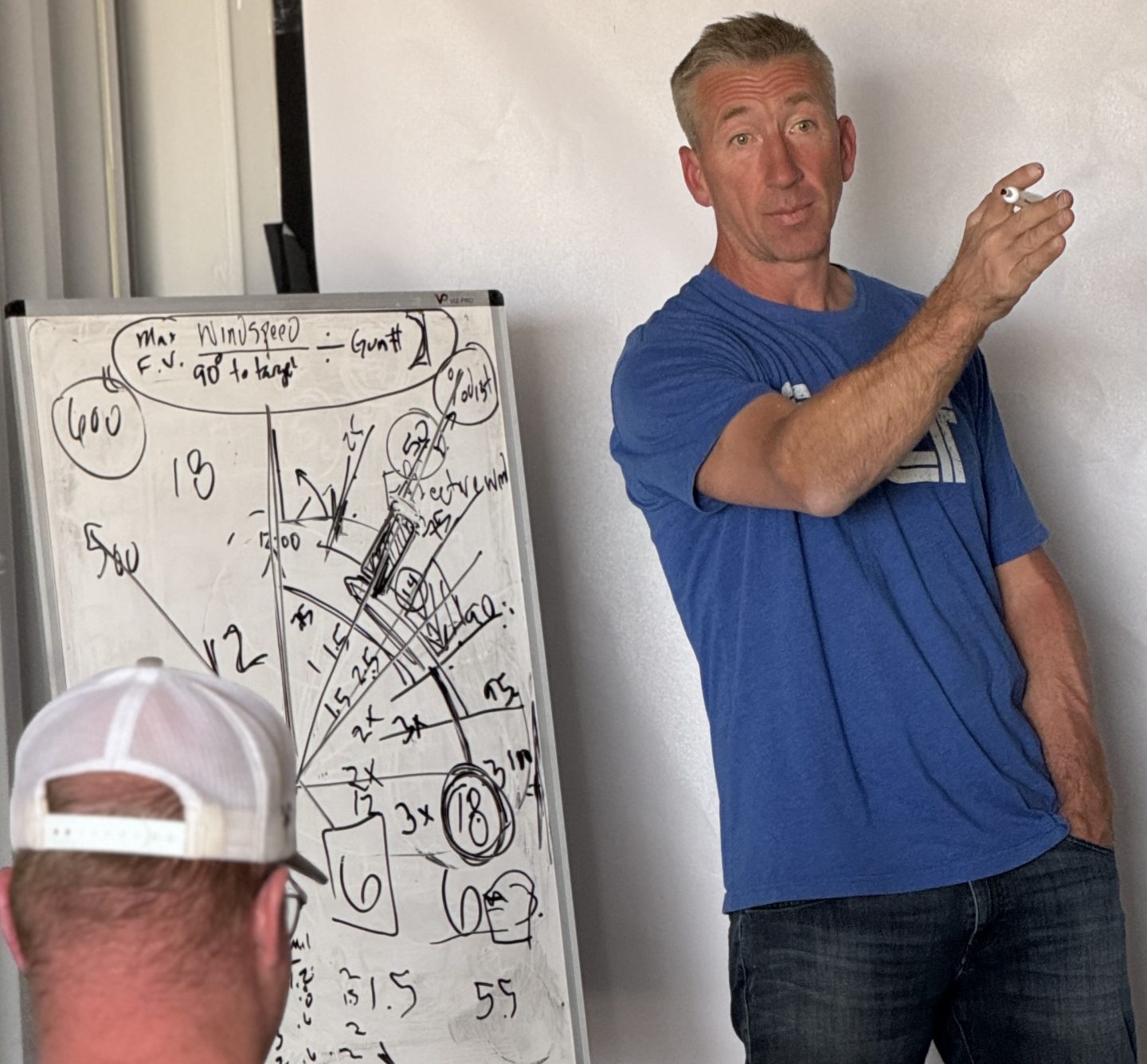
Knowledge of Gravity Ballistics and KraftWind across all three application areas—hunting, competition, and tactical work—promotes positive outcomes, self-reliance, and precision. These methods equip shooters to remain effective, safe, and adaptable under various conditions, thereby affirming their importance as essential skills in the field.
Personal Cases
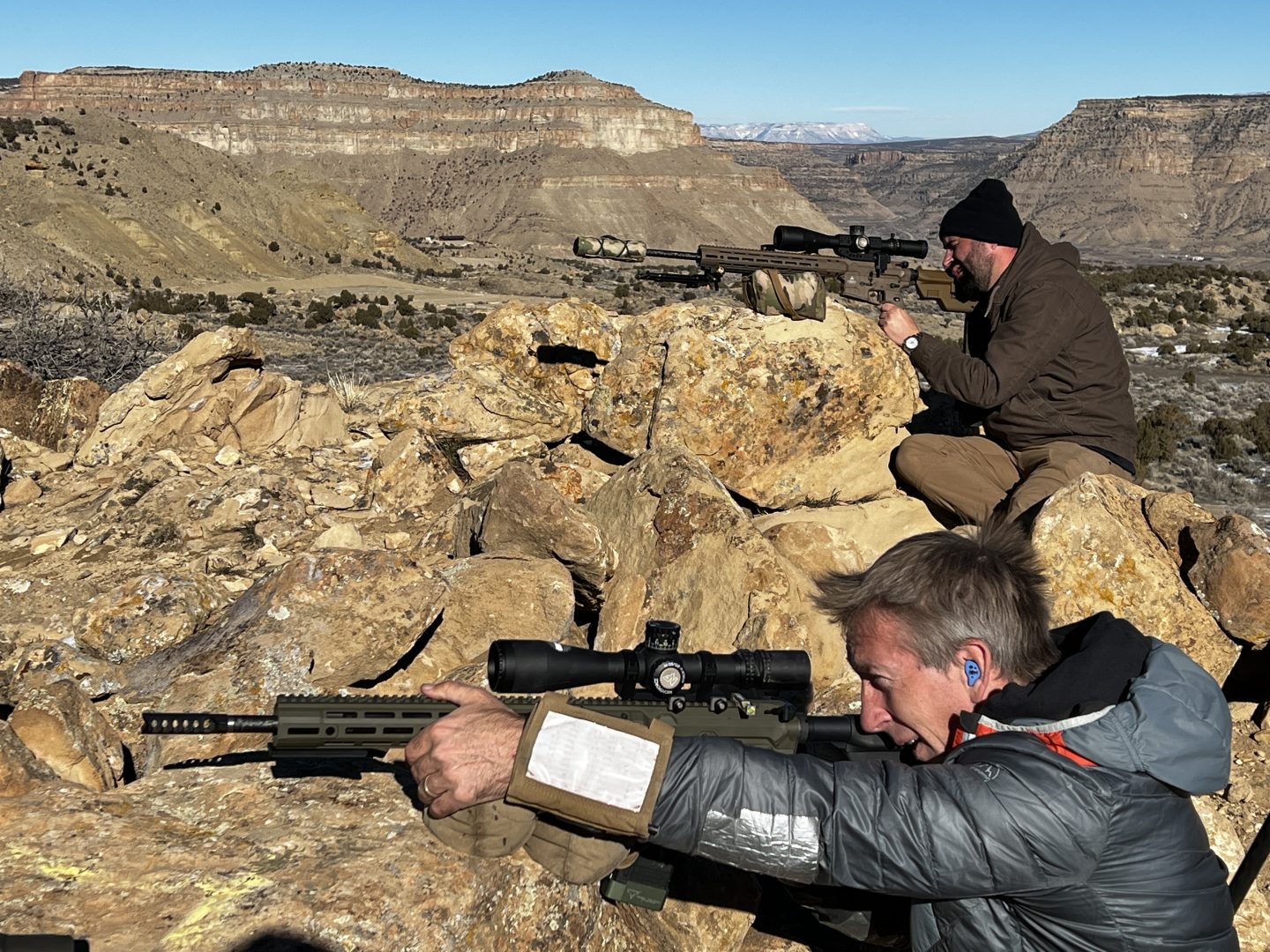
Having experienced various scenarios, I understand the importance of utilizing these methods for achieving favorable outcomes. The ability to identify the need and apply these methods allowed for a smooth transition and continued performance. I will highlight two recent instances that are significantly different from each other.
Competition problem solving
I attended a field match and had to use a rifle with which I was unfamiliar, as well as ammunition that had never been tested in that rifle. Typically, one might refrain from participating in a competition without having a zero for the ammunition or any data on the bullets. However, I am known for testing various scenarios regardless of the circumstances, and that is precisely what I did.
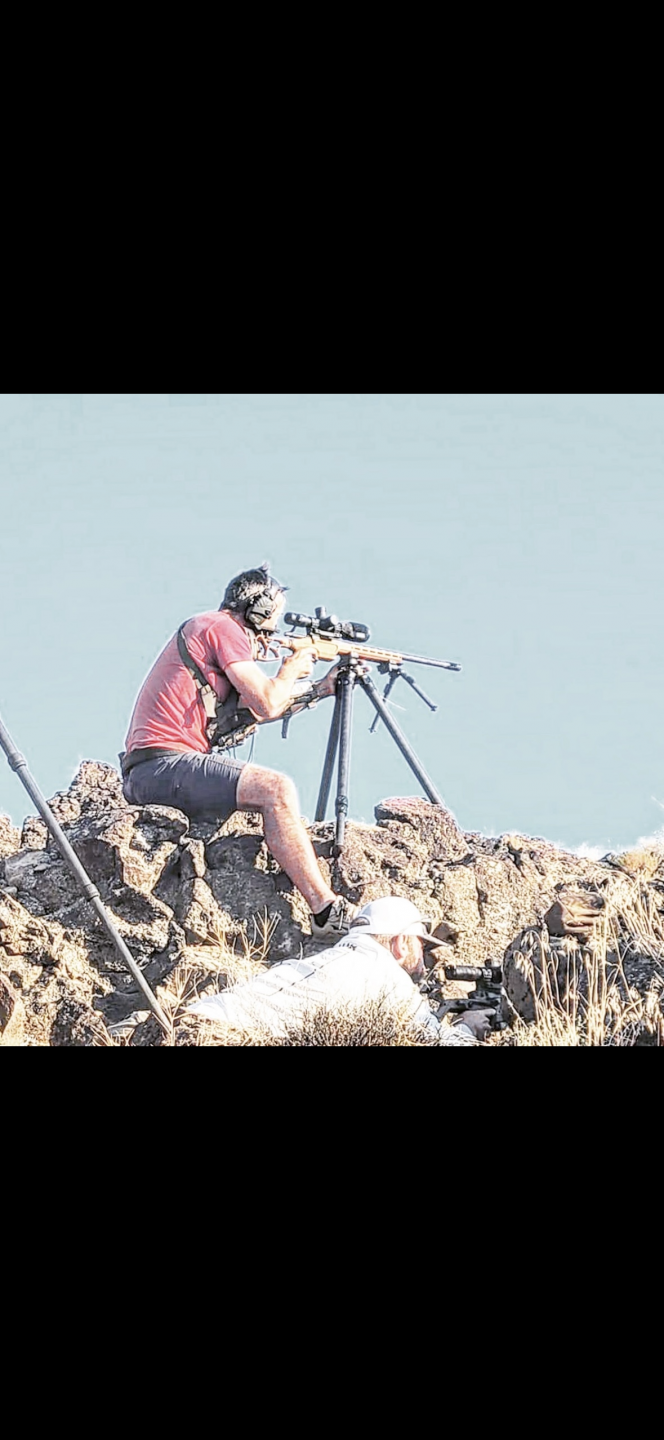
How did the competition proceed? Knowing that the rifle had a zero for something, I assumed that a 100-yard zero would be within an inch or so. Therefore, during the first stage, I used it as an opportunity to gather some data. Initially, I aimed to ensure that my windage was close to zero and to record drop values. I began by ranging a safe 100-yard patch and shooting to observe any deviation. Finding none, I ranged the first target and approximated a reasonable hold for a bullet of that weight. The first target was approximately 300 yards away, so I started with a 1-mil hold and held no wind due to the absence of noticeable wind conditions.
The impact was slightly high, indicating that my zero was likely high. Next, I aimed for a spot around 400 yards to obtain a comparative datapoint and noted that value. Although this approach resulted in sacrificing points, I obtained the necessary data to determine a proper zero. The drop from 300 to 400 yards is consistent across calibers, and in Gravity Ballistics, one multiplies the 300-yard drop by 1.75. Using these values, I deduced that my zero must have been off by 0.3 mils for the calculation to work accurately. Subsequently, I adjusted my turrets and recorded impact data for both 300 and 400 yards on my card, extrapolating the increments accordingly for every 100 yards. After that I had reliable ballistic information and the elevation and wind data I needed was accessible despite lack of electronics.
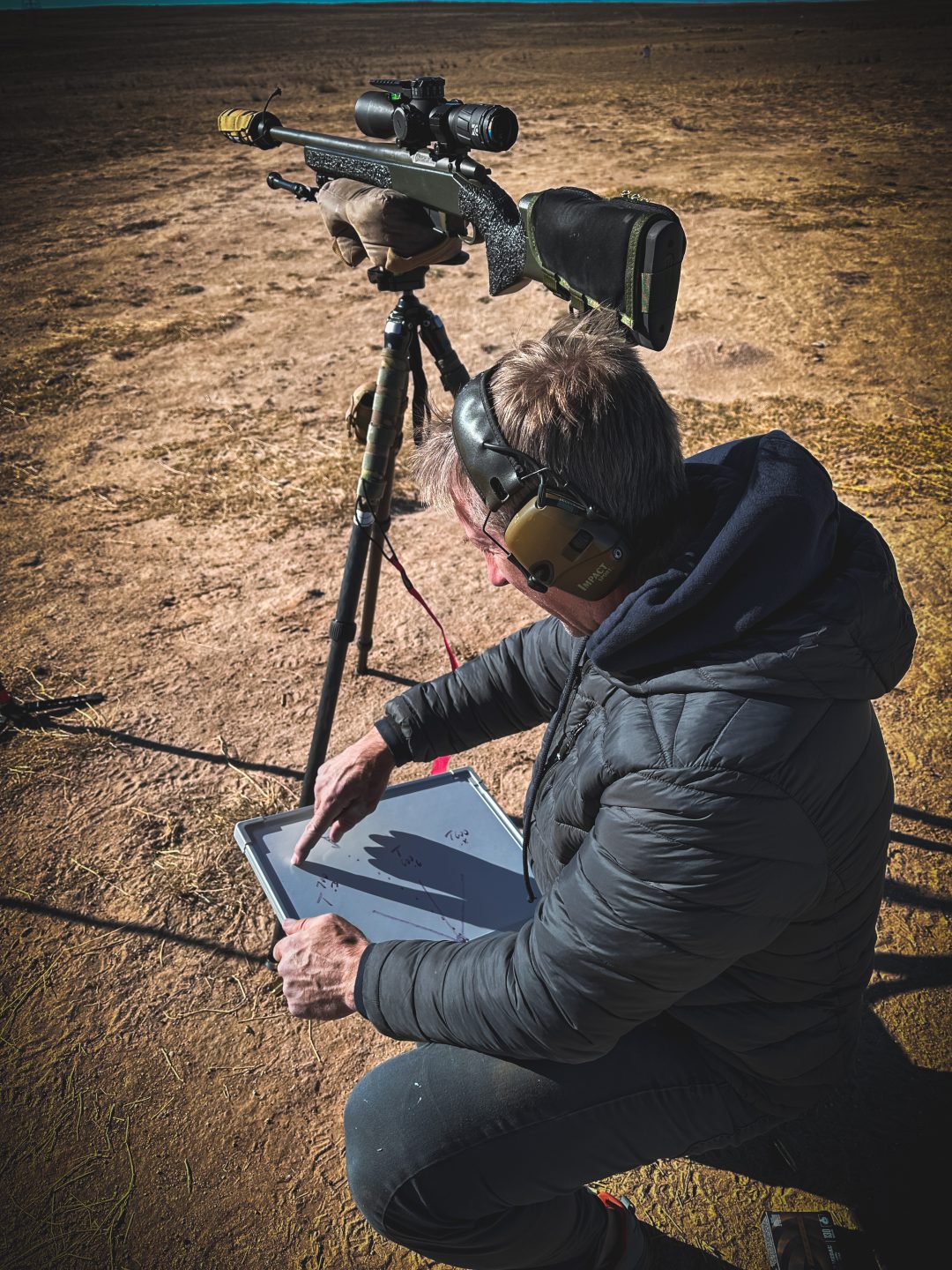
crunching numbers in your head
Now taking this data and extrapolating is not always sufficient, as it is common to make incremental adjustments of 0.1 as you progress with distance. As the stages continued, I marked impact elevation adjustments and refined the data accordingly. It took three additional stages after the initial one to develop a data card with which I was comfortable, within an accuracy of 0.2 elevation. At that point, my hit percentages improved significantly, and the remaining data collection focused on wind adjustments and fine-tuning. Although the sacrificed points were sufficient to prevent competition, the excitement and challenge of performing these adjustments in real-time in the field were highly rewarding. This experience enhanced my confidence in my ability to adapt on the fly and find ways to streamline the process to require fewer shots.
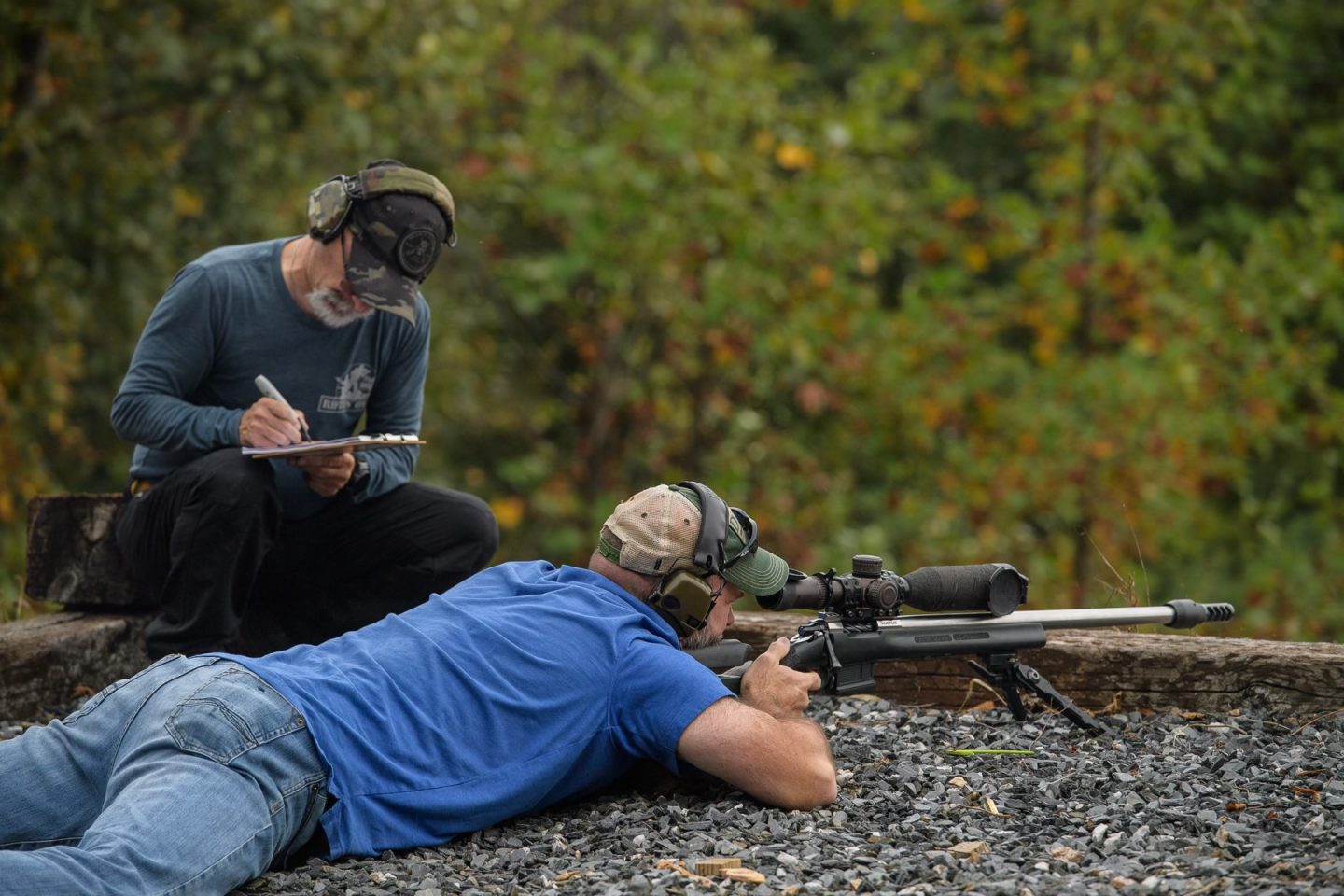
In the Wild
In an entirely different application and scenario, I found myself in the mountains with a zeroed rifle and ammunition but no data. This specific situation was a military assessment of a rifle system as part of a procurement process. The environment was unusual and had a density altitude higher than any I had previously encountered. Most shooters relied on Kestrels and calculators, trusting the output without question. While knowing the rifle was zeroed was beneficial, starting without data was less than ideal.
By employing gravity ballistics to calculate drop, I utilized sighter shots at intervals to record and calculate elevations between impacts. I targeted small objects at intervals of 300 or 400 yards to gather data, ensuring the mathematical calculations matched before filling in the elevations between these points. Successfully extending this method to over 1500 yards, I created a reliable data card that allowed me to outperform others equipped with devices.

This experience highlighted several significant points: first, I was not hindered by the lack of initial data, maintaining confidence throughout; second, many other shooters’ inputs were inaccurate, leading to unreliable data output. By not relying on potentially flawed device outputs, I trusted the ballistic performance and conducted my calculations with confidence, ultimately resulting in fewer shots and greater accuracy compared to my peers. This success can be attributed to my ability to generate and trust the necessary data independently, rather than being misled by over-reliance on devices.
Wrap up
For me these real world examples were both powerful positive reinforcers of the value of the techniques. Both were instances where I was able to demonstrate how a reliable, low-tech solution for shooters facing challenging conditions could be applied effectively and still achieve goals and success. To me these personal experiences underscore how important it is to have multiple tools for problems and that analog methods can empower shooters to adapt and succeed without depending on electronic ballistic calculators, even when critical data like muzzle velocity is unavailable.

